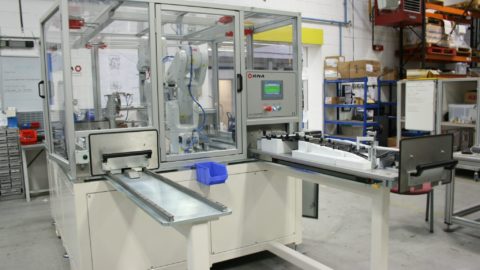
The 6-axis machining center feeders are designed to minimize waiting times between cycles
The 6-axis welding and turning center of RNA is a system integrating many outstanding features with many advanced applications in the field of automation.
Typically in the feed section of the machining center, the RNA feeder is currently being evaluated as a low-noise, compact and flexible feeding device that is more flexible than most of the same type. The RNA linear feeder is designed in a funnel shape with low height, making the raw materials easily loaded by disc lifting, pre-sorting and top-up without any additional feeding technique until they reach the desired height.
The linear feeder mat is developed to orient parts for which the linear feeder or the vibrating hopper feeder is incompatible. This detail allows the feeder to gently process directional parts from bulk input materials to irregular materials. For heavy and bulky materials, the orientation mat coordinates them to the pre-machined partition for coarse processing.
To start the process, the horizontal tray and feed tray are manually loaded by the operator and clamped to the slide before pushing into the machining position. Robot will select and match 15 clamps exactly to the horizontal tray, while robot 2 ultrasonic welding and matching feed tray respectively. The cycle time is optimized by having both robots work simultaneously to complete clamping and ultrasonic welding. To complete the process, the appraisal robot will mark the satisfactory products, and the poka-yoke tool also ensures the defect rate is as low as possible.
When the robot has finished its task, the operator pulls out the slide and the cycle is complete. The 6-axis machining center has 2 independent right and left slides, each consisting of a fixed clamping unit corresponding to the LH or RH control panels. While the operator is collecting the finished product on one side, the other side is automatically fed and processed by the robots. Such consecutive bearing cycles result in greatly improved machining center productivity.
In addition, a human-machine control interface (HMI) is integrated to provide operator guidance and allows them to easily configure parameters and monitor cycles in real time.
Here are some outstanding advantages of 6-axis welding and turning machining center:
Productivity and Quality Office